From Miltenberg station it is only a few metres until you cross the Main over a bridge. Here on the left side of the Main is the historic old town of Miltenberg.
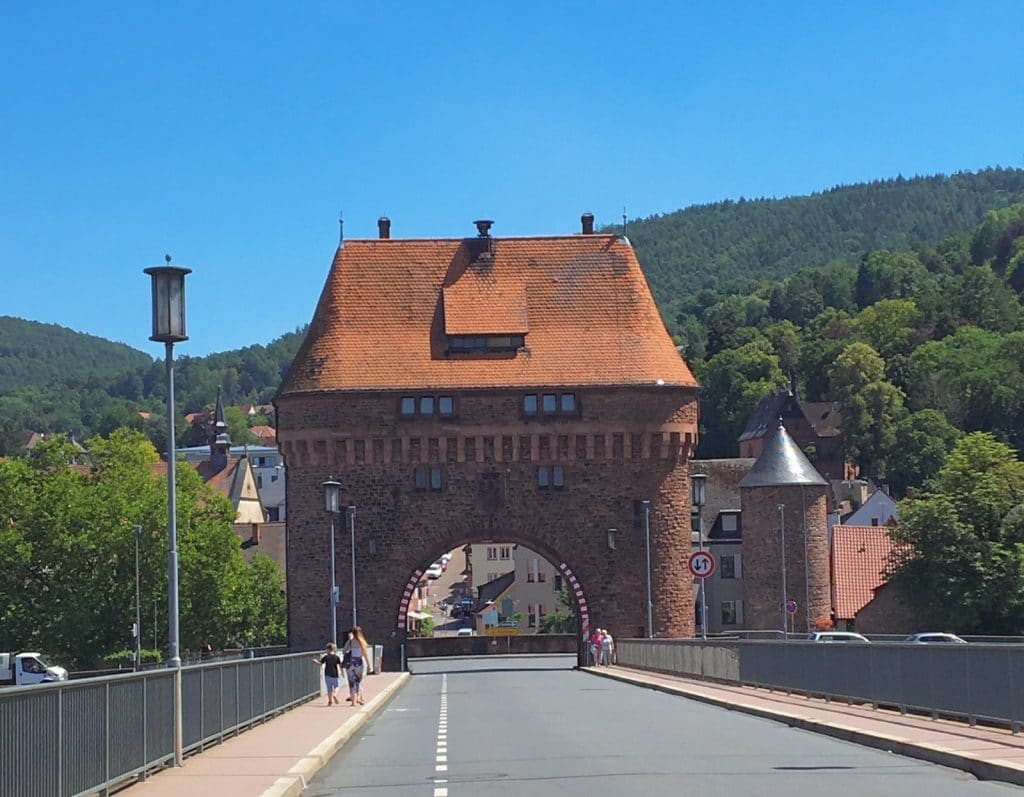
The old town of Miltenberg lies close to the River Main at the foot of the Odenwald. Here is the so-called Mainknie between the Odenwald and Spessart. Early on, the people of the region recognised the good strategic location and built large circular ramparts for protection. The Romans also recognised the strategic importance and built the Limes here, which formed the border of the Roman Empire to Germania. Today, the remains of two Roman forts can still be found in the region.
The town of Miltenberg was first mentioned in documents around 1237. It developed under the protection of Mildenburg Castle, which lies above the town. Miltenberg red sandstone was already very well known in the Middle Ages. It was used for millstones and columns.
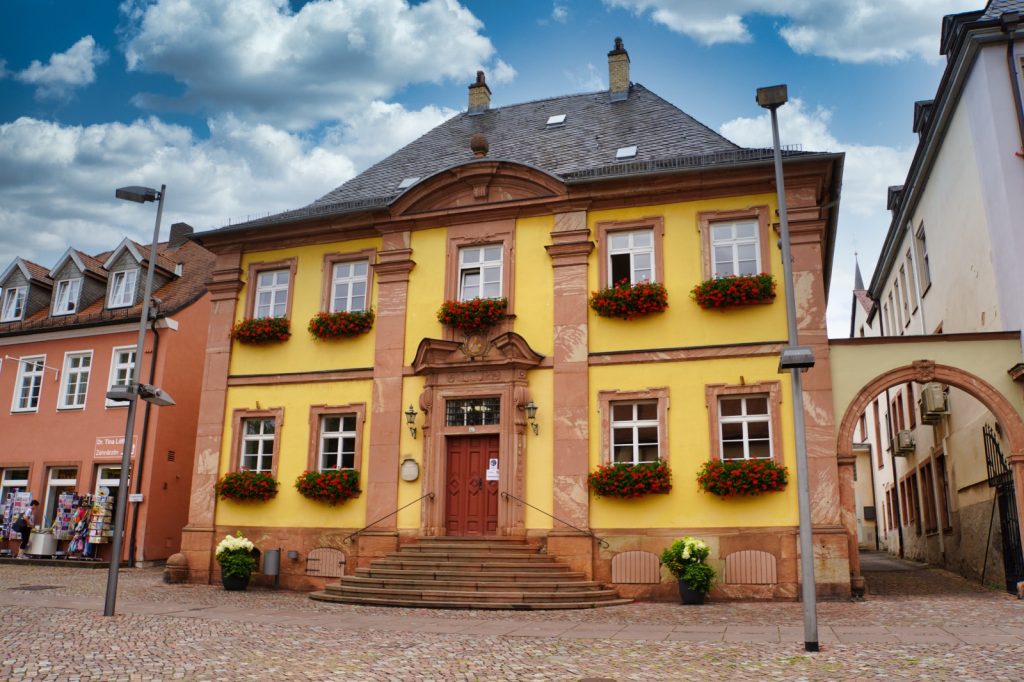
Walk through Miltenberg
We started our little city walk on Engelplatz in front of the town hall and spent about 1.5 hours in the old town. We discovered interesting and beautiful places.
Franciscan Monastery Church
Our first stop – the Franciscan monastery church on Engelplatz. The Franciscan order moved to Miltenbach as early as 1630. At first they lived in the hospital, but later they were able to move into the newly built convent. In 1667, construction of the church began under the direction of the court architect Antonio Petrini.
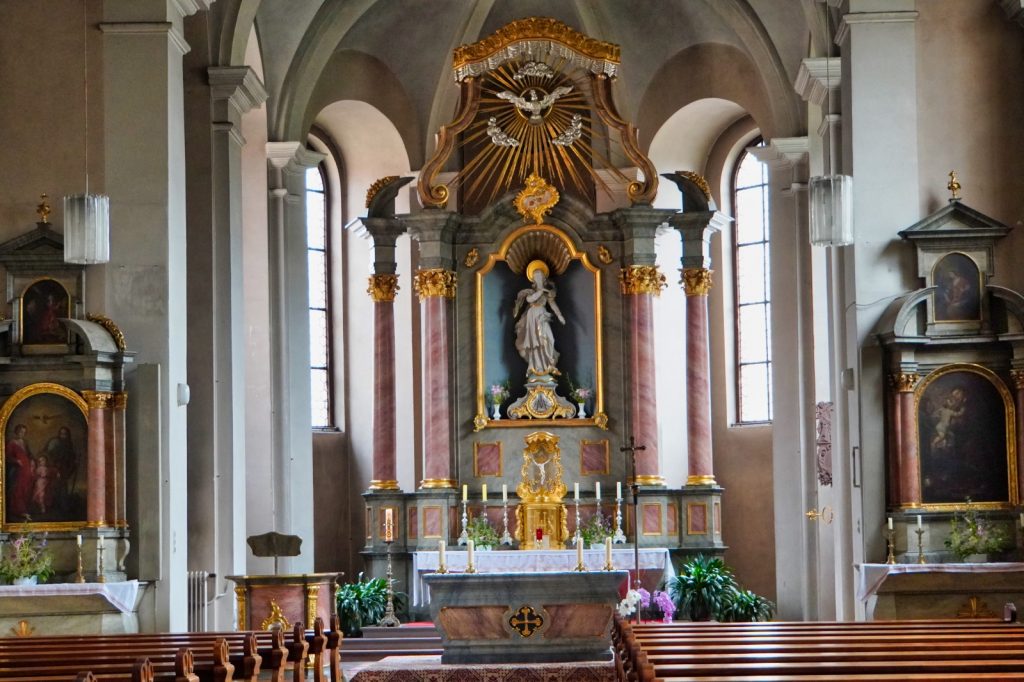
The 18th century was the heyday of the monastery. The Franciscans taught at the Miltenberg grammar school, philosophy and theology were taught in the monastery and a monastery garden enriched life. In 1803, the church properties were nationalised. The monks were granted lifelong residential rights. From time to time the convent stood empty, but was always used by the order. Around 1960, four priests and four lay brothers lived there. At that time, the interior of the church was redesigned. The interior was partially rebaroqueised. The side altars come from the church in Lautenbach.
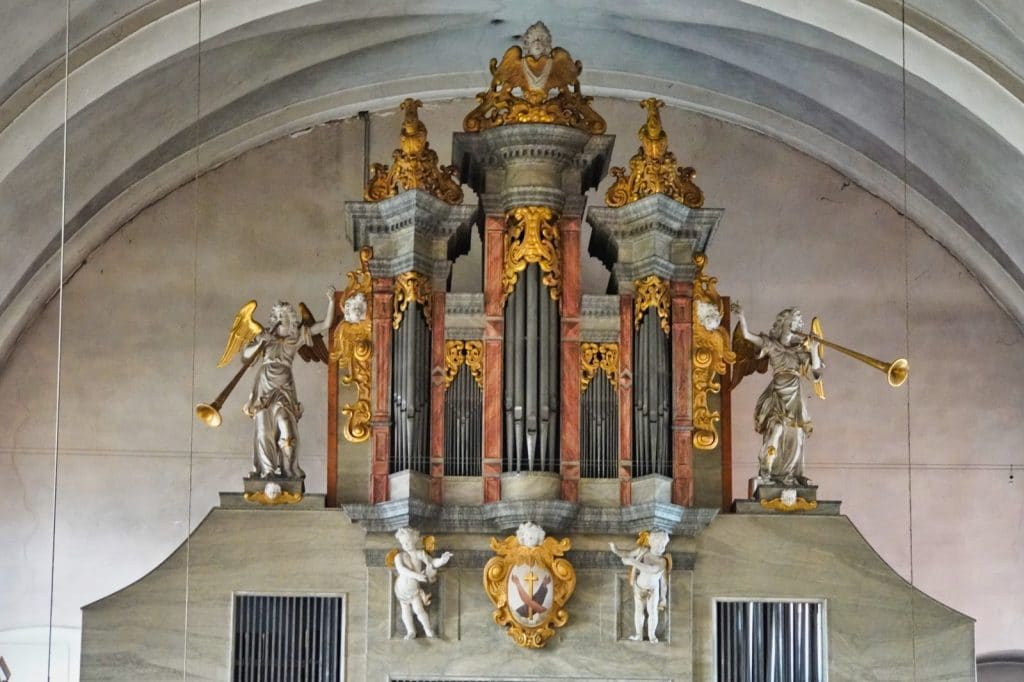
The Convention dissolved in 1983.
Before we move along the pedestrian zone, we first explore the “borders” of the old town. We walk along the old city wall to the old Jewish cemetery.
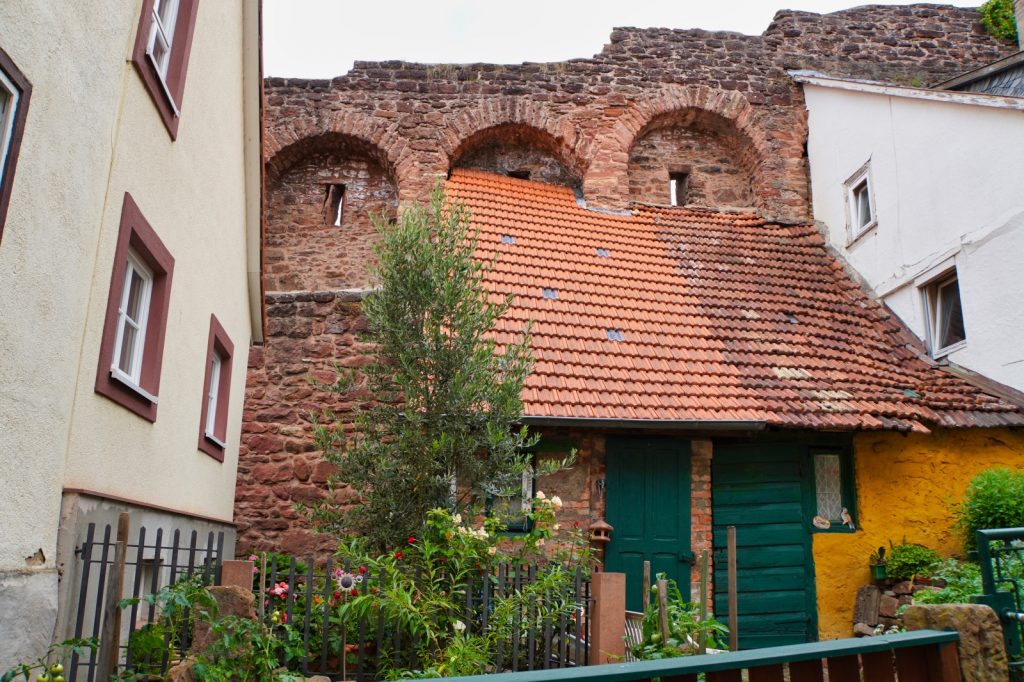
Old Jewish Cemetery
We are standing in front of a Jewish cemetery, which is located between the city wall and Burgweg. This is the place that commemorates the city’s Jewish fellow citizens, who contributed a lot to the city’s cultural and economic life.
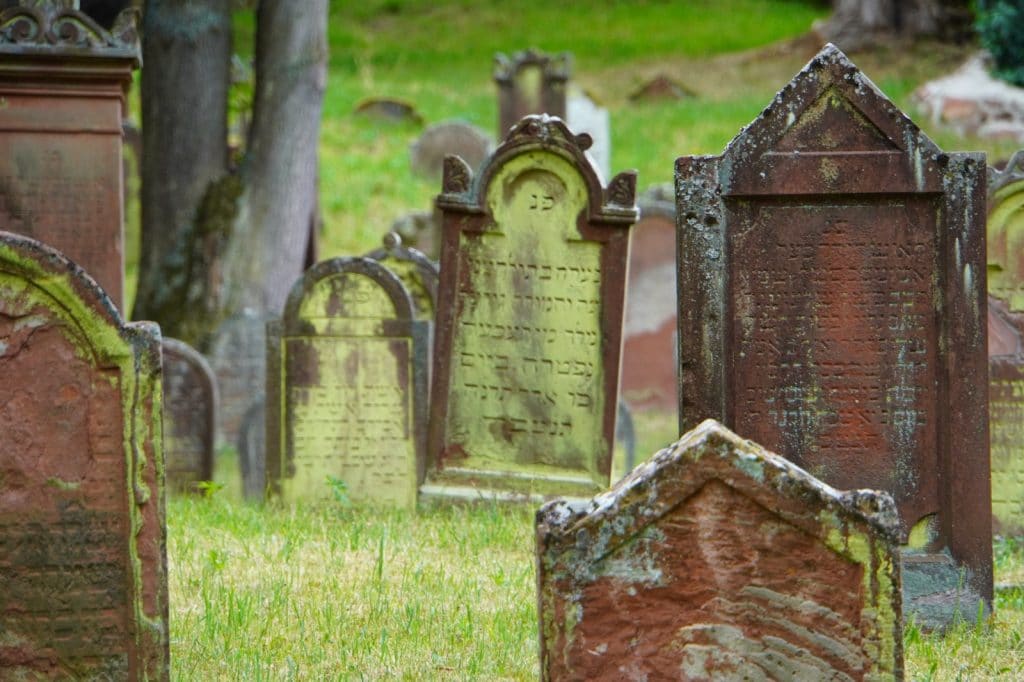
I am fascinated by the weathered gravestones with their often barely legible inscriptions. The stones are crooked and crooked, but that’s the way it has to be. They are supposed to sink into the earth over time, just as the memory of man sinks more and more. It is almost a mystical place that has something magical about it, even in bright sunshine.
Pedestrian zone
Back in the pedestrian zone of Miltenberg, I almost can’t concentrate on the path. Again and again my gaze wanders upwards. The Schwarzviertel, as the oldest part of Miltenberg is called, lies between “Schwertfeger Tor” and the market square. Here the sun barely shines on the ground, so close are the houses.
What beautiful half-timbered houses can be found in the old town of Miltenberg. You can discover the most diverse building styles. What I particularly like is that there are hardly any “building sins” that disturb the harmonious townscape. And if you like strolling through pedestrian zones, you will discover one or two shops that are hard to pass by.
Gasthaus „Zum Riesen“
Then, at a crossroads, we pass one of the most famous buildings in the old town. The Gasthaus zum Riesen, also called the Fürstenherberge, is said to be one of the oldest inns in Germany. The present half-timbered building was built from 1590 onwards. The half-timbered structure has been preserved almost unchanged.
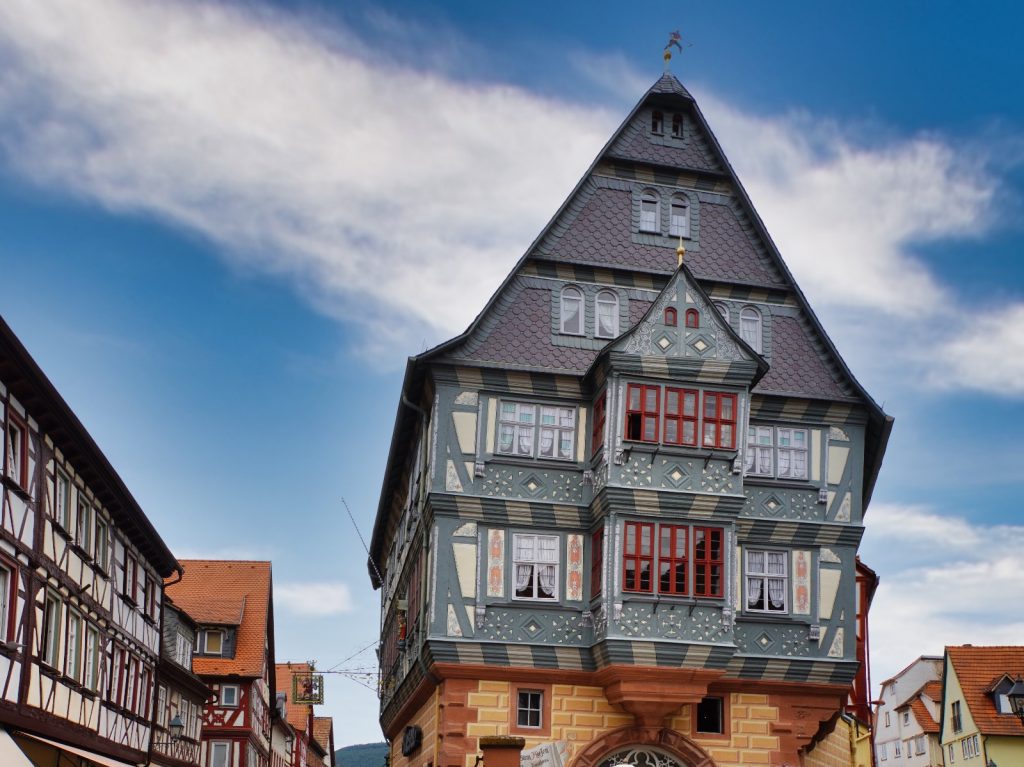
In the 19th century, the inn was granted brewing rights. The brewer’s star on the sign indicates this. Today, the Riese is run by the Faust brewery. We also ate here later. Of course I also tried the brewery’s Riesen Spezial. I wrote about it in the article “Beer in Churfranken“.
Old Town Hall
If you follow the pedestrian zone, you come to the old Gothic town hall of the city. It was first mentioned in 1379 as the town scales. It is also said to have been used as a dance hall, council chamber and storehouse. Travelling merchants were allowed to sell their goods here on the ground floor.
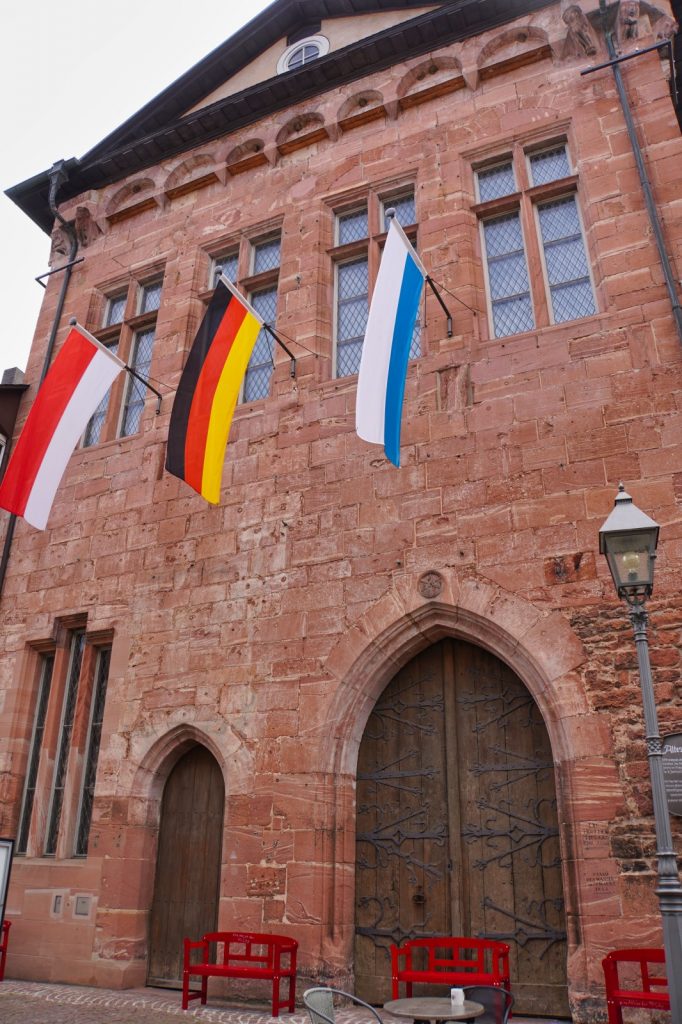
Standing at the old town hall, the first thing you notice are the flood marks on the building. Here you can see very clearly which flood disasters the historic old town has already survived.
St. Jakobus Church
We could now catch a glimpse of the city parish church of St.Jakobus, which lies at the end of the pedestrian zone. The two characteristic choir flank towers have welsh bonnets and lanterns. They were built in 1829-1831 and provide an ideal orientation aid in the city.
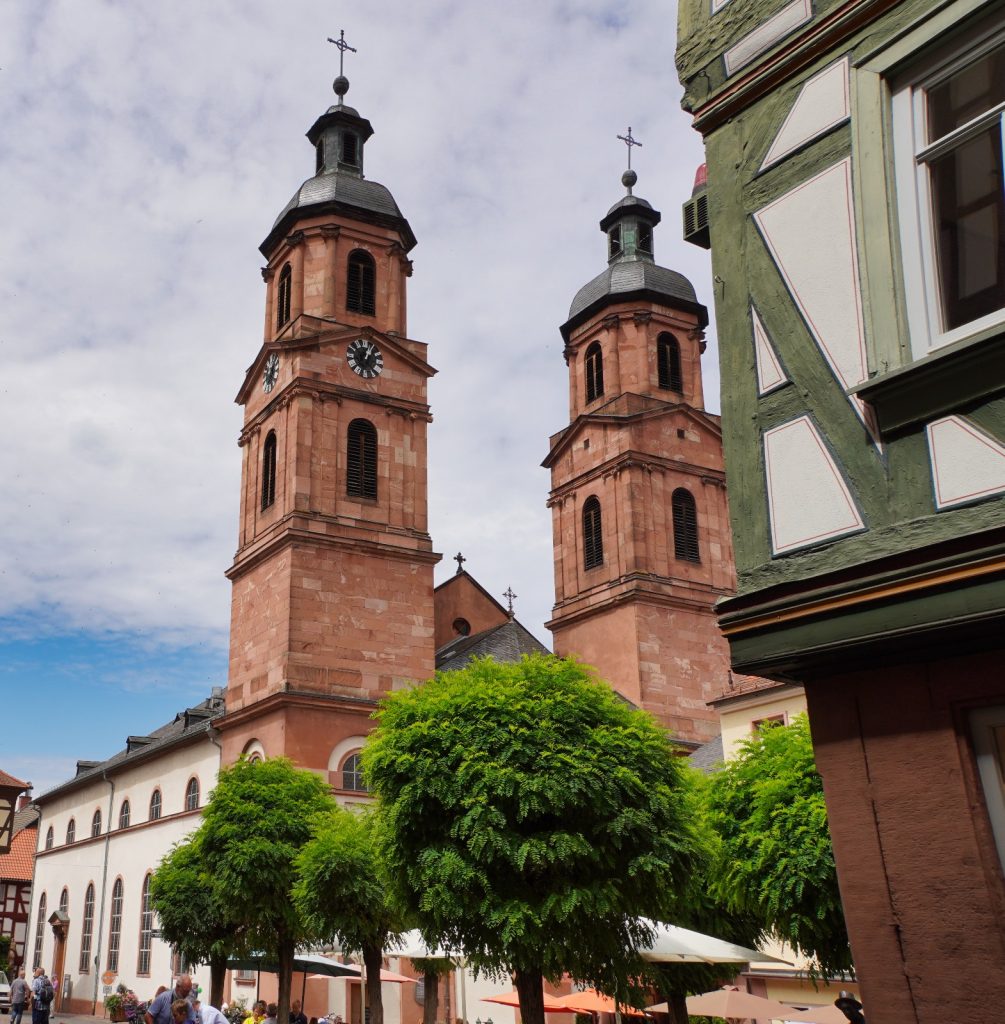
Schnatterloch at the historic market place
Right next to the church is the place you see in so many pictures of Miltenberg. Here on the market square is the market square fountain and numerous beautiful half-timbered houses make the square a dreamlike ensemble. From here, a path leads up to the castle, passing through the Schnatterlochturm, a well-preserved Renaissance arch.
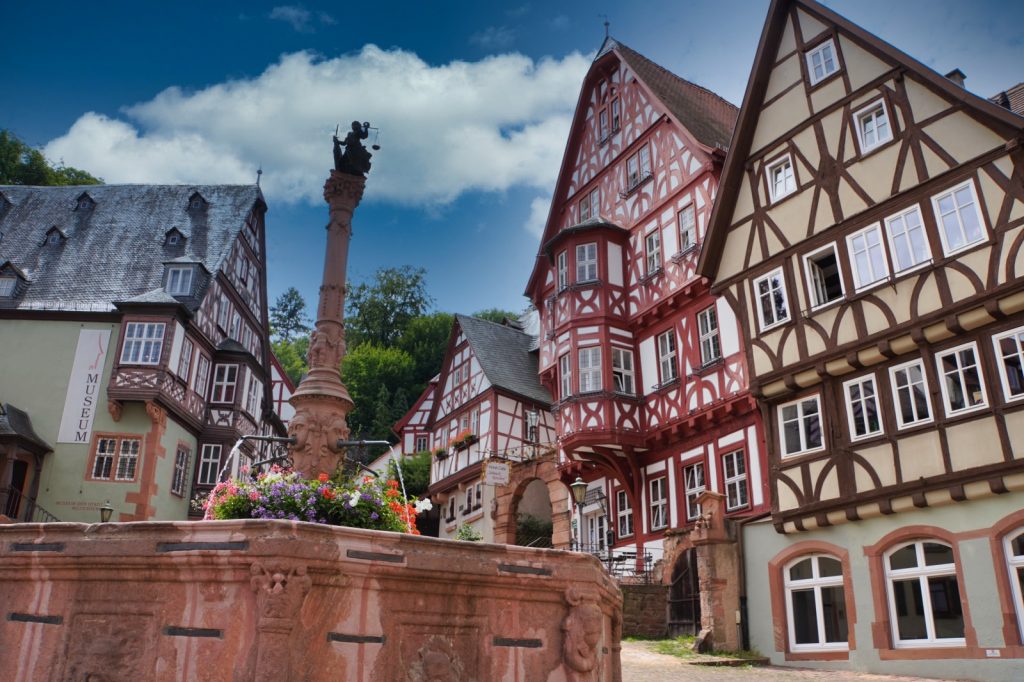
I like the place a lot and I can understand why so many photos are taken here.
Why the “Schnatterloch” is called Schnatterloch can be seen from a sign on the tower.
The term derives from the medieval word “Snade” = aisle, border. It describes a drainage ditch that reached down to the Main River and at the same time marked the city boundary.
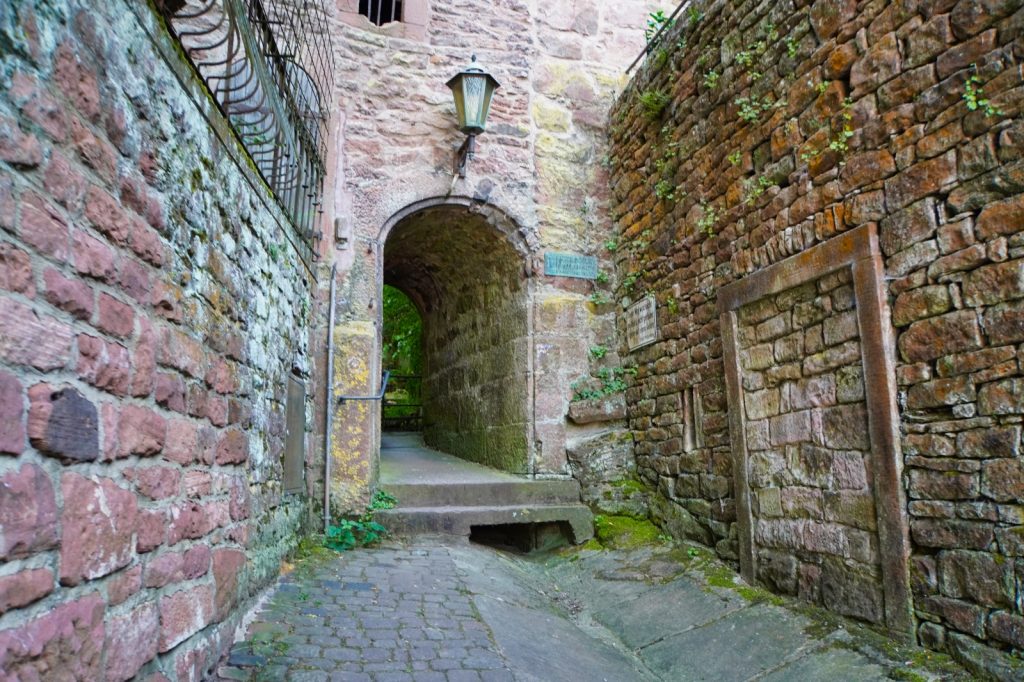
A tip: A short walk through the tower brings you to the Turmeck house. From here you have a fantastic view over Miltenberg.
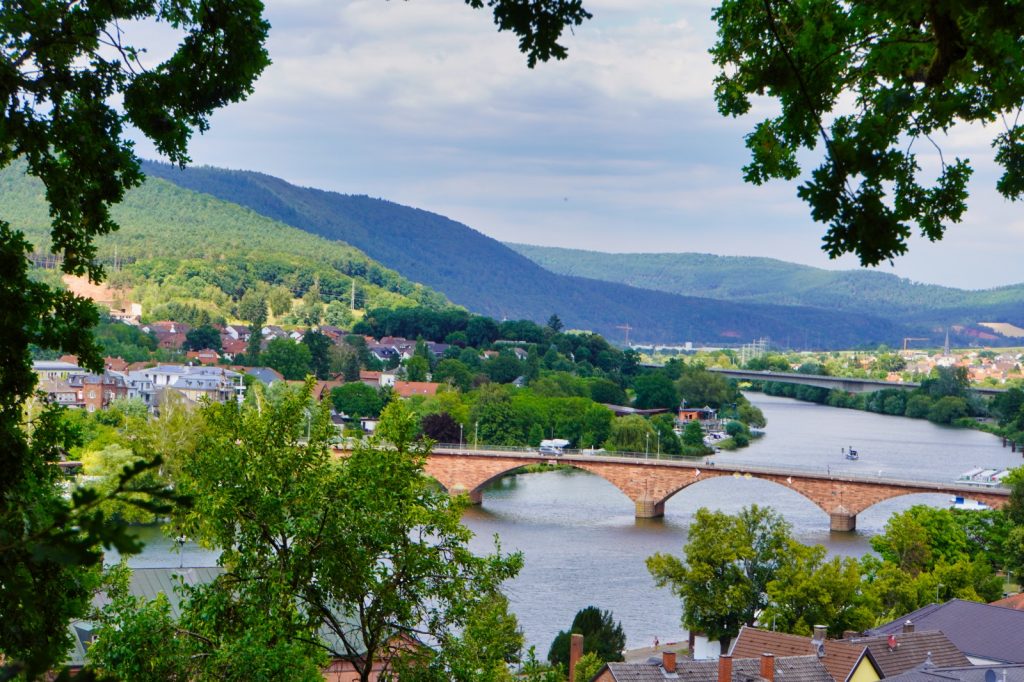
Staffelbrunserbrunnen
The end of our little tour is marked by a fountain on the banks of the Main.
In the time of carnival, many communities and towns have mocking names and nicknames with which people refer to each other in a friendly way. The people of Miltenberg are called Staffelbrunser. How the name came about is only known according to legend. According to legend, some of the town’s inhabitants fetched their water from the Staffelbrunnen well in the town. So they were called Staffelbrunnler. Later on, the term was shortened to “Staffelbrunser”. Brunsen means “to urinate” in the region.
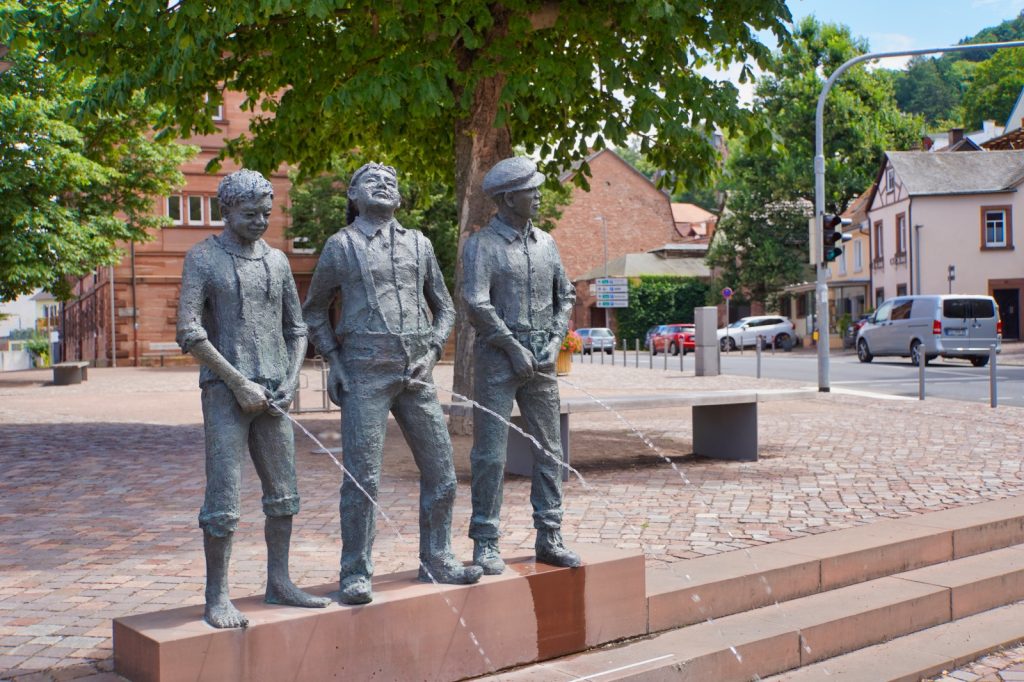
The fountain with the three gentlemen urinating at different distances refers to the nickname.
Some people may not like the fountain and it was certainly not uncontroversial among the people of Miltenberg after its completion. But I like it very much. I find the figures characteristically well portrayed and simply funny.
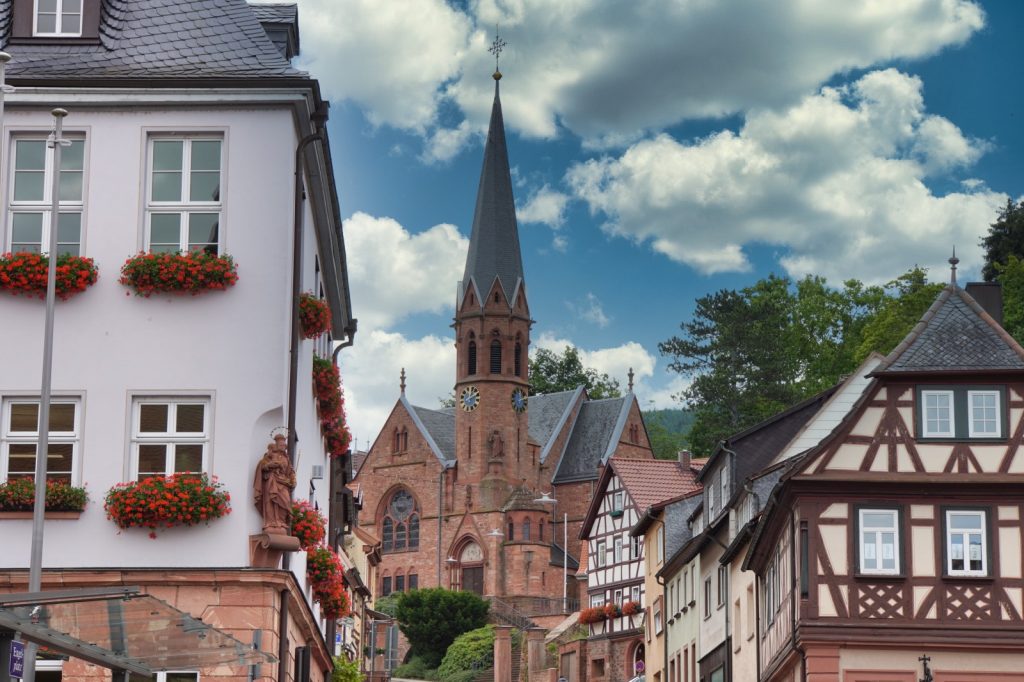
Disclosure: The city tour in Miltenberg was part of a press trip. The article corresponds to my impressions and was written independently of the visit.
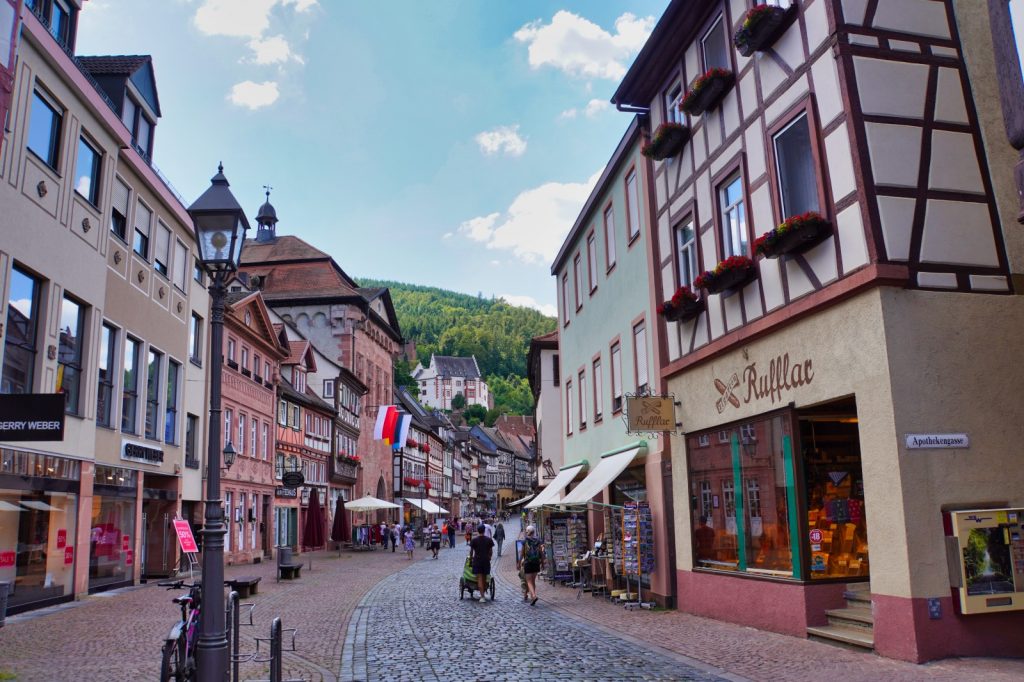

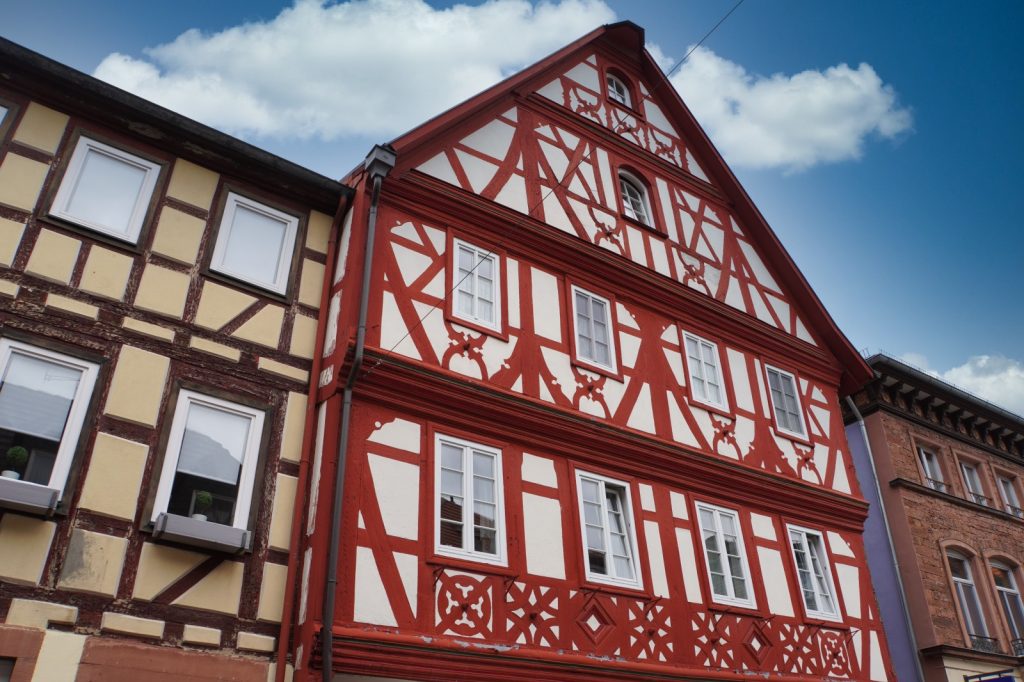
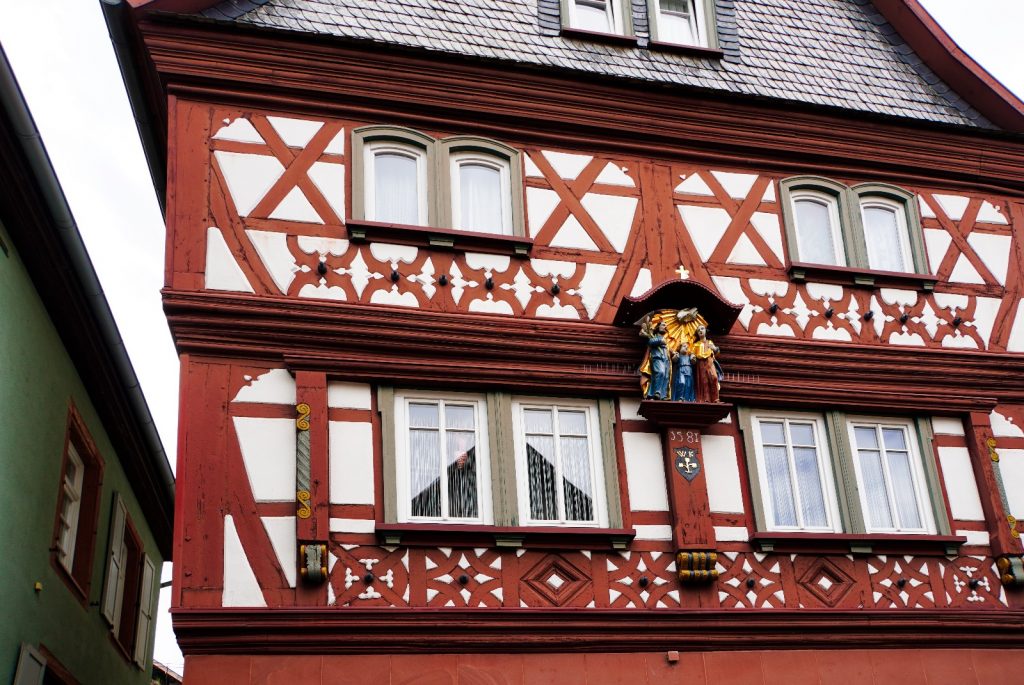

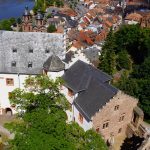
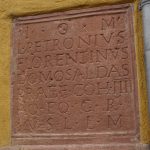

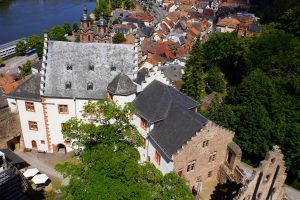
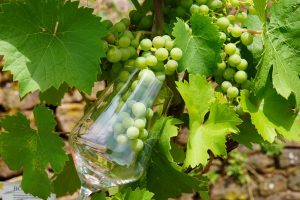
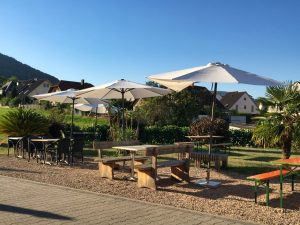
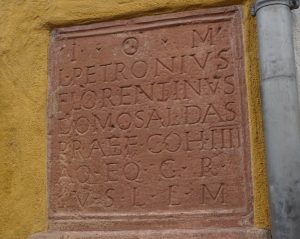
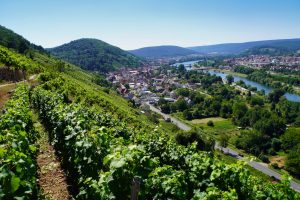
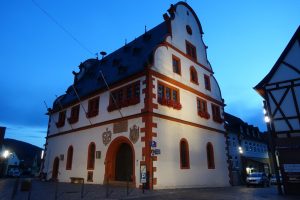

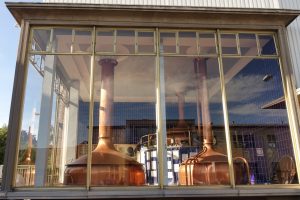

Leave a Reply